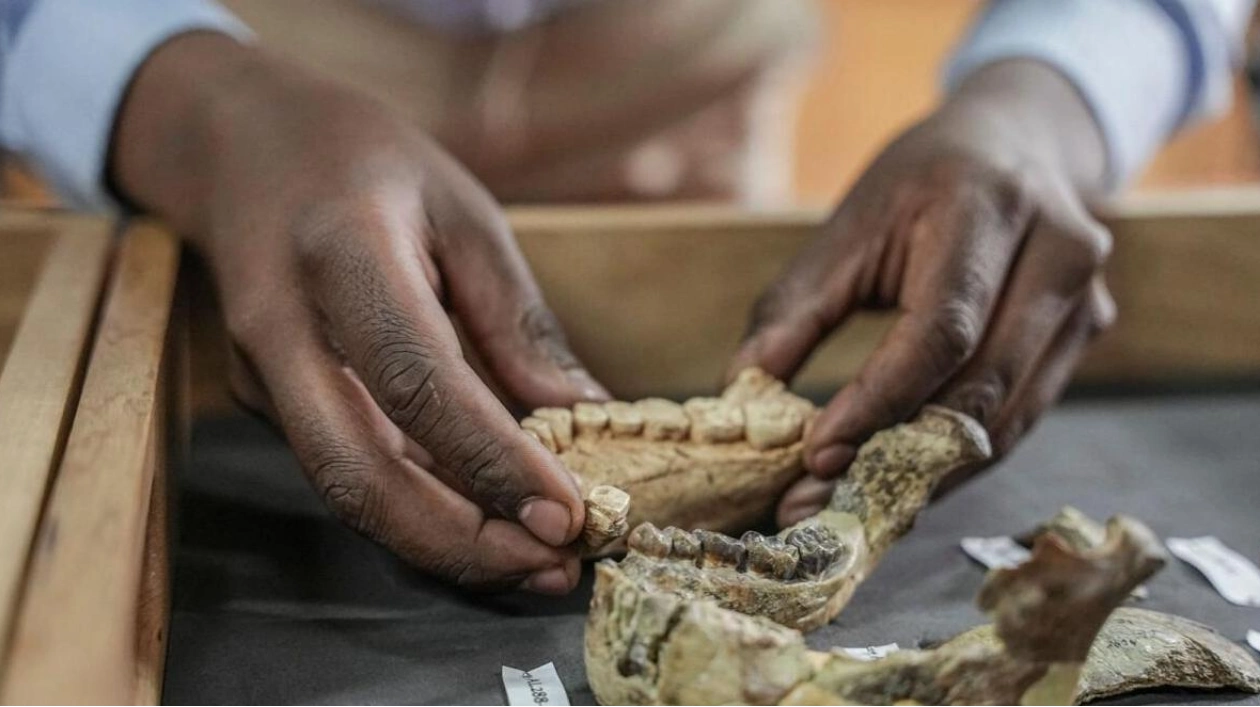Sahleselasie Melaku, 31, Head of the Department and Research Associate of the Paleontology and Paleoanthropology collections, meticulously inspects bone fragments of the fossil skeleton of 'Lucy' at the National Museum of Ethiopia in Addis Ababa, on November 19, 2024. – AFP
For a time, she was the oldest known member of the human family. Fifty years after the discovery of Lucy in Ethiopia, the remarkable remains continue to spark theories and questions. In a modest room at the National Museum of Ethiopia, the 3.18-million-year-old bones are carefully extracted from a secure location and laid out on a long table. These include fossilized dental remains, skull fragments, parts of the pelvis and femur that constitute the world's most renowned Australopithecus afarensis, Lucy.
The hominid was unearthed on November 24, 1974, in the Afar region of northeast Ethiopia by a team of scientists led by Maurice Taieb, Yves Coppens, Donald Johanson, Jon Kalb, and Raymonde Bonnefille. The 52 bone fragments, representing about 40% of Lucy's skeleton, were the most complete ever found at the time, revolutionizing our understanding of our ancestors. Initially designated A.L-288-1, the skeleton was nicknamed Lucy after The Beatles' song 'Lucy in the Sky with Diamonds,' which the researchers celebrated to after their groundbreaking discovery.
Lucy walked upright and is believed to have died between the ages of 11 and 13—considered an adult for her species. She stood at 1.10 meters (3.6 feet) tall and weighed 29 kg (64 pounds). For Sahleselasie Melaku, the 31-year-old head of the paleontology department, Lucy's discovery marked a significant shift from a 'dark age' in our knowledge of human ancestors. 'The impact of the discovery was immense in the field and even globally,' he told AFP.
Lucy demonstrated that members of the human family existed over three million years ago and served as a template for fitting together subsequent bone discoveries. The wealth of information derived from her bones has enabled highly detailed theories about her life. For instance, a slightly deformed vertebra suggests she likely suffered from back issues, according to Melaku. Jean-Renaud Boisserie, a paleontologist specializing in Ethiopia and research director at the French National Centre for Scientific Research, described the discovery as 'exceptional' for the field.
'We knew very little about the period three million years ago, and we had nothing as complete,' he said. Lucy was often hailed as 'the grandmother of humanity,' but recent discoveries suggest she might have been more akin to an aunt or cousin. Skeletal finds in Ethiopia, South Africa, and Kenya have complicated the narrative, sparking debates about when various hominid species emerged and their classification within the human or chimpanzee families.
The discovery of 'Toumai' in Chad in 2001—a skull dated to six or seven million years old—indicates the human family may extend much further back than previously believed. Meanwhile, Lucy continues to hold secrets. A 2016 study posited that she spent a third of her time in trees, where she nested, and had highly developed upper limbs. Another study in the same year, published in the American journal Plos One, theorized she died from a fall from a tree. A 2022 study in Nature, focusing on Lucy's pelvis, concluded that newborn Australopithecus had a very immature brain, akin to human newborns today, and required parental care to survive.
'There are many unanswered questions,' Melaku said with a smile. 'Especially, we know little about the early livelihoods of these early human ancestors.' The museum frequently receives requests to study Lucy, but the iconic skeleton no longer leaves Ethiopia. Advances in scientific progress and sophisticated equipment are paving new paths for research.
'The studies that can be conducted on her, on her peers, pose the scientific questions of tomorrow,' said Boisserie. 'Material as exceptional as this drives the evolution of research.'
Source link: https://www.khaleejtimes.com






